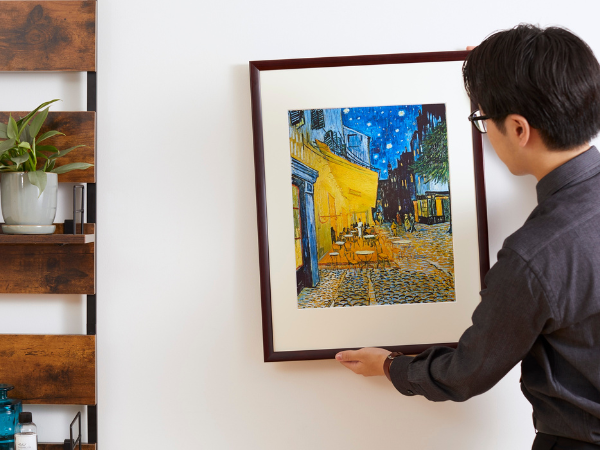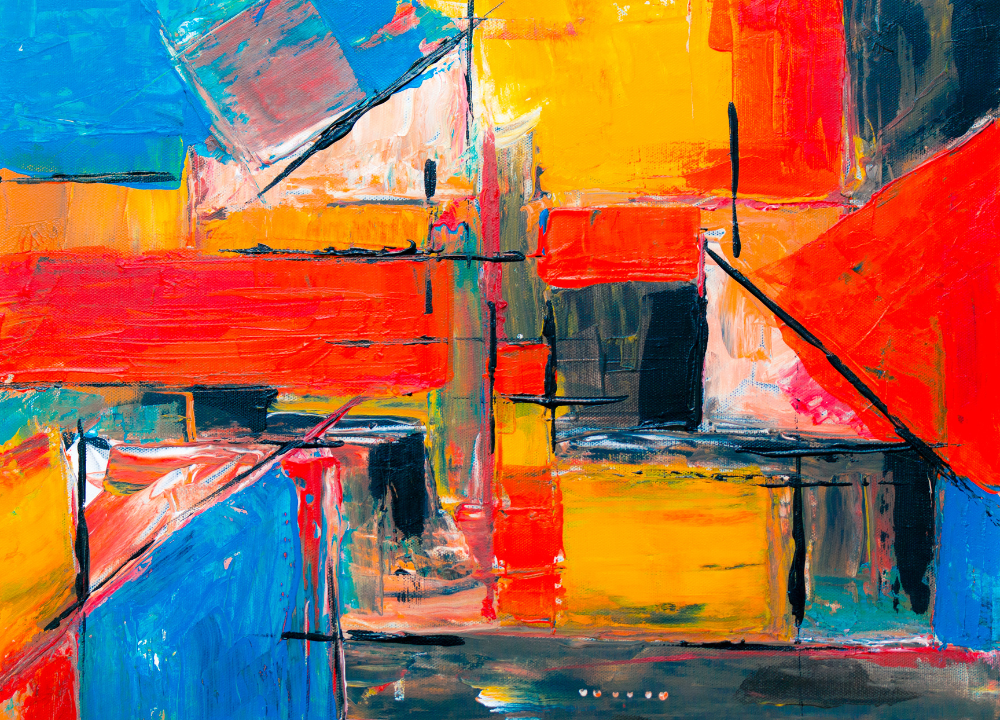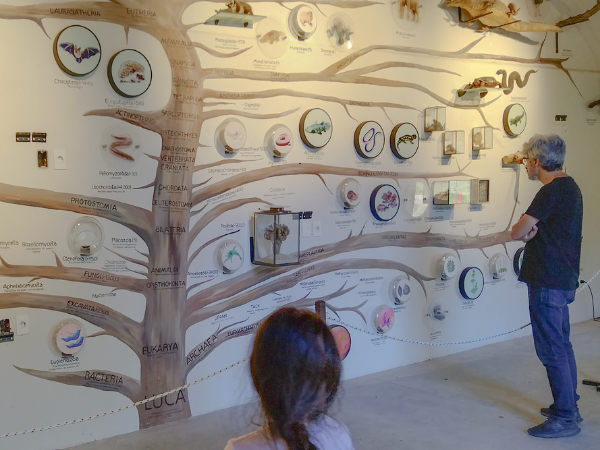Creating an artist CV can be challenging. An impressive CV showcases your talent and experience to potential galleries, employers, and clients.
An artist CV is more than just a list of your work. It tells your story and highlights your unique skills. Whether you are a painter, musician, or performer, a well-crafted CV can open doors to new opportunities. Many artists struggle to present their achievements clearly.
This guide will walk you through each step to build an effective CV. You will learn what to include and how to format your information. By the end, you will have a polished document that reflects your artistic journey. Let’s dive into the process and make your CV stand out.
Importance Of An Artist Cv
Creating an impressive artist CV is crucial for any artist. It serves as your professional identity. An artist CV showcases your skills, education, and experiences. A well-crafted CV can open doors to exhibitions, grants, and collaborations. Understanding the importance of an artist CV is the first step towards your success.
Why It Matters
Your artist CV plays a key role in your career. It provides a clear picture of your artistic journey. A strong CV highlights your accomplishments. It can set you apart from other artists. Here are some reasons why it matters:
- Professional Representation: It reflects your artistic identity.
- Career Opportunities: It opens doors to shows and grants.
- Networking: It helps you connect with other artists and professionals.
- Documentation: It keeps a record of your achievements.
Your CV is not just a list of experiences. It tells your story. Include relevant information such as:
| Section | Description |
|---|---|
| Contact Information | Your name, email, phone number, and website. |
| Education | Degrees, courses, and any relevant training. |
| Exhibitions | Solo and group shows you have participated in. |
| Awards | Grants, scholarships, and other recognitions. |
| Skills | Technical and artistic skills relevant to your work. |
Each section of your CV adds value. It helps you present a complete picture of your career. A strong CV builds trust with galleries and curators. It shows that you take your art seriously.
First Impressions Count
First impressions matter in the art world. Your artist CV is often the first thing people see. A well-organized CV reflects professionalism. It should be visually appealing and easy to read. Here are key tips to make a strong first impression:
- Clear Layout: Use headings and bullet points for easy navigation.
- Consistent Formatting: Keep fonts and styles uniform throughout.
- Concise Information: Keep descriptions brief but informative.
Consider these elements for a positive impact:
- Tailored Content: Customize your CV for each opportunity.
- Professional Design: Use white space to avoid clutter.
- Proofread: Check for grammar and spelling errors.
Use a professional tone in your writing. Avoid jargon. Make sure your CV is accessible to a broad audience. A strong first impression can lead to more opportunities. Your CV is your calling card in the art community.

Essential Components
Creating an impressive artist CV is crucial for showcasing your work and securing opportunities. The essential components of an artist CV highlight your skills and experiences. They provide a clear picture of your artistic journey. Each part serves a specific purpose in telling your story. Focus on these components to ensure your CV stands out.
Contact Information
Your contact information is the first step in making a great impression. It should be clear and easy to find. Include the following:
- Full Name: Use your professional name.
- Email Address: Choose a professional email.
- Phone Number: Include a number where you can be reached.
- Website or Portfolio: Link to your online portfolio.
- Social Media Links: Provide links to relevant platforms.
Here’s an example layout for your contact information:
| Component | Example |
|---|---|
| Full Name | Jane Doe |
| Email Address | [email protected] |
| Phone Number | (123) 456-7890 |
| Website | www.janedoeart.com |
| Social Media | @janedoeart on Instagram |
Keep your contact information up to date. This helps galleries and clients reach you easily. Make sure it is presented at the top of your CV. Use a clear font for easy reading.
Artist Statement
Your artist statement is a key part of your CV. It explains your work and your vision. It gives insight into your creative process. Write it in a way that reflects your personality.
Keep your artist statement concise. Aim for 100-200 words. Include the following elements:
- Your Inspiration: What drives your creativity?
- Medium and Techniques: What materials do you use?
- Artistic Goals: What do you hope to achieve with your art?
- Audience Engagement: How do you want viewers to feel?
Here is a simple structure for your artist statement:
1. Start with a strong opening line. 2. Discuss your inspiration and creative process. 3. Share your goals and audience engagement. 4. End with a memorable closing statement.
For example:
“My work is inspired by nature’s beauty. I use watercolor and ink to create vibrant landscapes. My goal is to evoke peace and reflection in viewers. I hope my art invites them to explore their surroundings.”
Write your statement in a friendly tone. Avoid jargon. Make it personal. This gives your audience a glimpse into who you are as an artist.
Educational Background
Creating an impressive artist CV is essential for showcasing your talent and credentials. Your educational background is a key part of this. It helps galleries and employers understand your training and skills. This section highlights your degrees, certifications, workshops, and residencies. Each of these elements adds depth to your profile. Let’s explore how to present them effectively.
Degrees And Certifications
Degrees and certifications are fundamental components of your educational background. They demonstrate formal training in your field. Include any relevant degrees, whether they are in fine arts, design, or other related areas. List certifications that show specialized training or skills. These can strengthen your CV.
Here are some important points to include:
- Degree Title: Specify the exact title, like Bachelor of Fine Arts.
- Institution: Name the school or university.
- Location: Mention the city and state.
- Year of Graduation: State when you completed your degree.
- Relevant Certifications: Include any additional certifications that enhance your qualifications.
Consider using a table for clarity:
| Degree/Certification | Institution | Year |
|---|---|---|
| Bachelor of Fine Arts | University of Arts | 2020 |
| Certificate in Graphic Design | Design Institute | 2021 |
| Master of Arts | Art College | 2023 |
Make sure to keep this section well-organized. This helps readers quickly find the information they need. Highlight any honors or special achievements under each entry.
Workshops And Residencies
Workshops and residencies are vital for your artistic growth. They show your commitment to developing your skills. These experiences can set you apart from other artists. List relevant workshops that provide new techniques or insights. Include artist residencies where you had the chance to create and collaborate.
Consider these elements for your list:
- Workshop Title: Clearly state the name.
- Organizer: Name the institution or organization.
- Location: Include where it took place.
- Year: Mention the year you attended.
For residencies, include:
- Residency Name: Specify the program.
- Duration: State how long you participated.
- Focus: Describe the main goals of the residency.
Here’s an example format:
| Workshop/Residency | Organizer | Year |
|---|---|---|
| Advanced Painting Techniques | Art Workshop Co. | 2021 |
| Summer Artist Residency | Creative Space | 2022 |
Detailing your workshops and residencies adds credibility. It shows ongoing education and a desire to grow as an artist. This can impress potential employers and galleries.
Exhibition History
Exhibition history is a key section of your artist CV. It showcases your experience and credibility as an artist. A well-organized exhibition history attracts attention from galleries and collectors. It tells your story through the art you have shared with the world. This section helps establish your professional reputation and highlights your artistic journey.
Solo Exhibitions
Solo exhibitions are a significant part of your career. They demonstrate your ability to create a cohesive body of work. These shows reflect your unique vision. Here are some tips for listing your solo exhibitions:
- Include the title of the exhibition.
- List the venue or gallery name.
- Mention the location (city, state).
- Provide the year of the exhibition.
Present your solo exhibitions in a clear format. Here’s an example table:
| Exhibition Title | Venue | Location | Year |
|---|---|---|---|
| Reflections of Nature | Art Gallery of Modern Art | New York, NY | 2022 |
| Colors of Emotion | Downtown Art Space | Los Angeles, CA | 2021 |
List at least five solo exhibitions. Focus on your most significant shows. Highlight any awards or press coverage that followed these exhibitions.
Group Exhibitions
Group exhibitions provide valuable exposure. They allow you to showcase your work alongside other artists. This can enhance your visibility in the art community. Here’s how to present your group exhibitions:
- List the title of the exhibition.
- Mention the venue or gallery name.
- Include the location (city, state).
- State the year of the exhibition.
Organize your group exhibitions in a table for clarity:
| Exhibition Title | Venue | Location | Year |
|---|---|---|---|
| Art in the Community | City Arts Center | Chicago, IL | 2023 |
| Emerging Artists | Gallery 101 | San Francisco, CA | 2022 |
Include at least five group exhibitions. Mention any roles you had, such as curator or organizer. Highlight any recognition you received from these shows.
Awards And Honors
Creating an impressive artist CV is vital for showcasing your talents and achievements. One essential section is “Awards and Honors.” This part highlights your recognition in the art world. It can include grants, competitions, and other accolades. These achievements can help you stand out to galleries, curators, and potential buyers. A well-crafted section on awards and honors will enhance your credibility as an artist.
Grants
Grants are a significant way to show your work’s value and potential. They provide funds to support your art projects. Including grants in your CV reflects your ability to secure financial support. This also shows that your work is recognized by trusted organizations.
When listing grants, include the following:
- Grant Name: The official title of the grant.
- Awarding Organization: The name of the organization that provided the grant.
- Date Received: The year you received the grant.
- Project Title: The name of the project funded by the grant.
| Grant Name | Awarding Organization | Date Received | Project Title |
|---|---|---|---|
| Artist Development Grant | Art Foundation | 2022 | Inspiring Futures |
| Creative Project Grant | Local Arts Council | 2023 | Nature’s Palette |
Keep this section clear and concise. Each entry should highlight your achievements. Use strong verbs to describe your projects. Make sure to update your CV regularly as you earn more grants.
Competitions
Competitions can help elevate your profile as an artist. Winning or participating in them shows your skills and dedication. List any competitions you have entered, especially if you won awards. This demonstrates your commitment to your craft.
Include the following details for competitions:
- Competition Name: The title of the competition.
- Award Status: Specify if you were a finalist, winner, or participant.
- Date: The year you participated or won.
- Location: Where the competition took place.
| Competition Name | Award Status | Date | Location |
|---|---|---|---|
| International Art Contest | Winner | 2021 | Paris, France |
| Local Art Show | Finalist | 2022 | New York, USA |
Make your competition entries impactful. This helps show your artistic journey. Regular updates are essential as you participate in new competitions.
Professional Experience
Creating an impressive artist CV is vital for showcasing your skills and experiences. A well-structured CV highlights your professional journey. The ‘Professional Experience’ section is crucial. It reflects your teaching roles, collaborations, and other relevant experiences. This section provides insight into your artistic journey and credibility.
Teaching Positions
Teaching positions demonstrate your ability to share knowledge and inspire others. They show your expertise in your art field. Include both formal and informal teaching experiences. Think about workshops, classes, and mentorships.
When listing teaching positions, include the following details:
- Institution Name: Where you taught.
- Position Title: Your role (e.g., Instructor, Guest Lecturer).
- Years of Service: Duration of your teaching role.
- Course/Subject Taught: What you taught.
| Institution Name | Position Title | Years of Service | Course/Subject Taught |
|---|---|---|---|
| Art Academy | Guest Lecturer | 2021-2022 | Contemporary Art |
| Community Center | Workshop Leader | 2020 | Watercolor Techniques |
Highlight any special projects or achievements in your teaching roles. Mention awards or recognitions received for your contributions. This information adds depth to your CV.
Collaborations
Collaborations showcase your ability to work with other artists. They reflect your openness to different ideas and techniques. List partnerships, group projects, and exhibitions you participated in. Each collaboration tells a story about your artistic path.
Include details such as:
- Collaborator’s Name: Who you worked with.
- Project Title: Name of the project.
- Year: When the collaboration took place.
- Description: Brief summary of the project.
| Collaborator’s Name | Project Title | Year | Description |
|---|---|---|---|
| Jane Doe | Art in Nature | 2022 | A joint exhibition exploring natural themes. |
| John Smith | Urban Canvas | 2023 | A mural project bringing art to city spaces. |
Focus on the impact of your collaborations. Mention any exhibitions, publications, or media coverage that resulted from these projects. This highlights your active involvement in the art community.
Conclusion
Creating an impressive artist CV takes time and effort. Follow the steps outlined in this guide to build a strong resume. Focus on clarity and detail in your work. Highlight your skills and experiences. A well-crafted CV opens doors to new opportunities.
Keep it updated as your career grows. Review it regularly to ensure it reflects your best work. With patience and practice, you can create a CV that truly represents you. Your art deserves to be showcased effectively. Start building your CV today and take the next step in your artistic journey.




